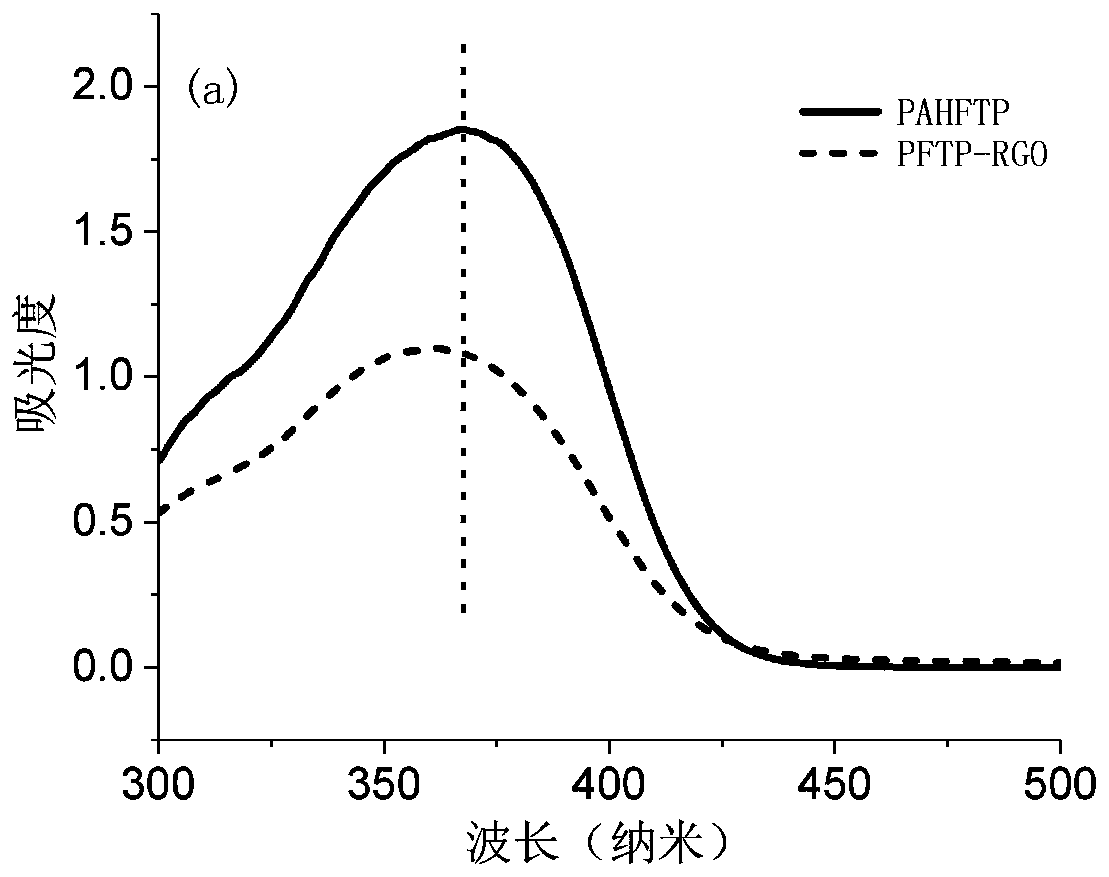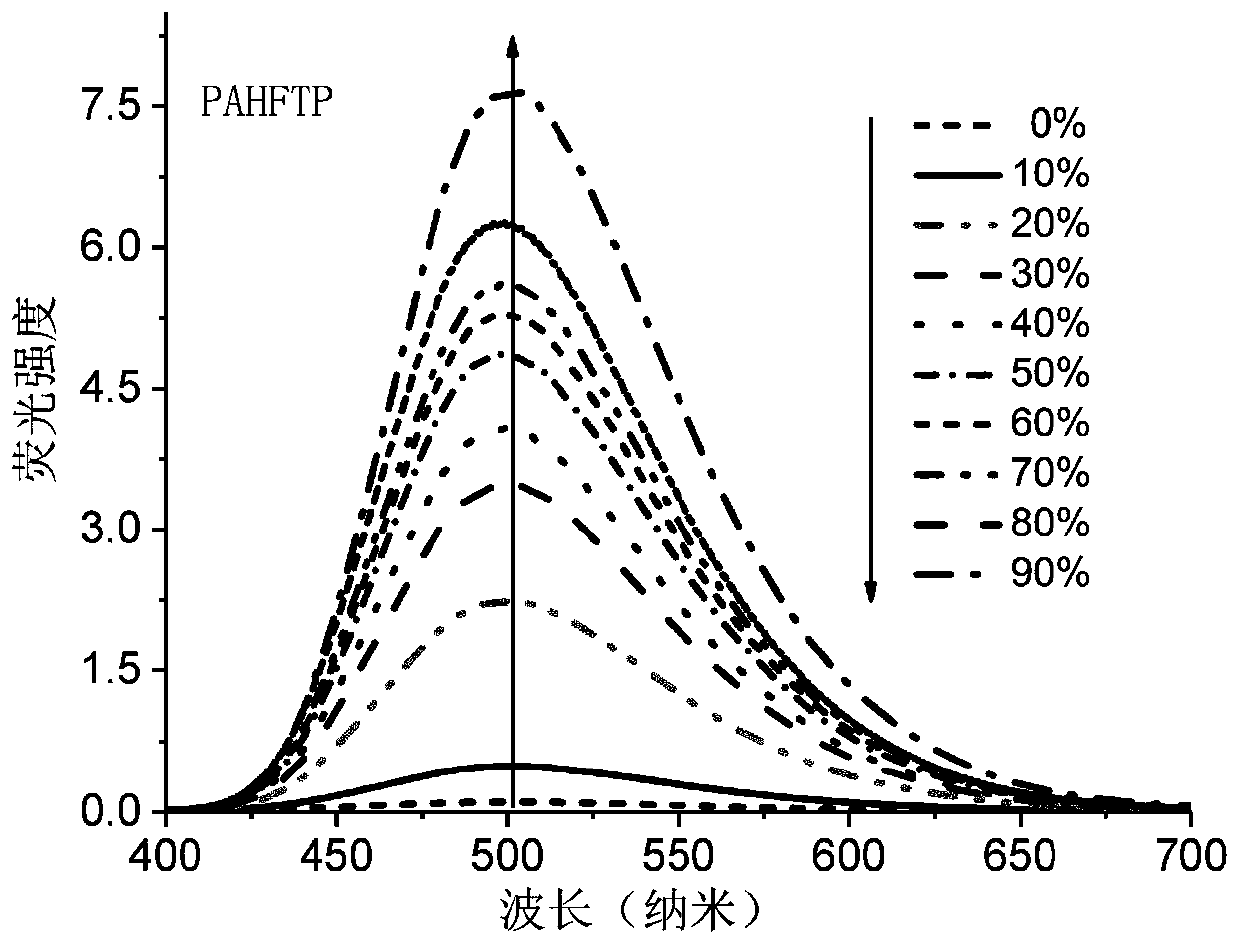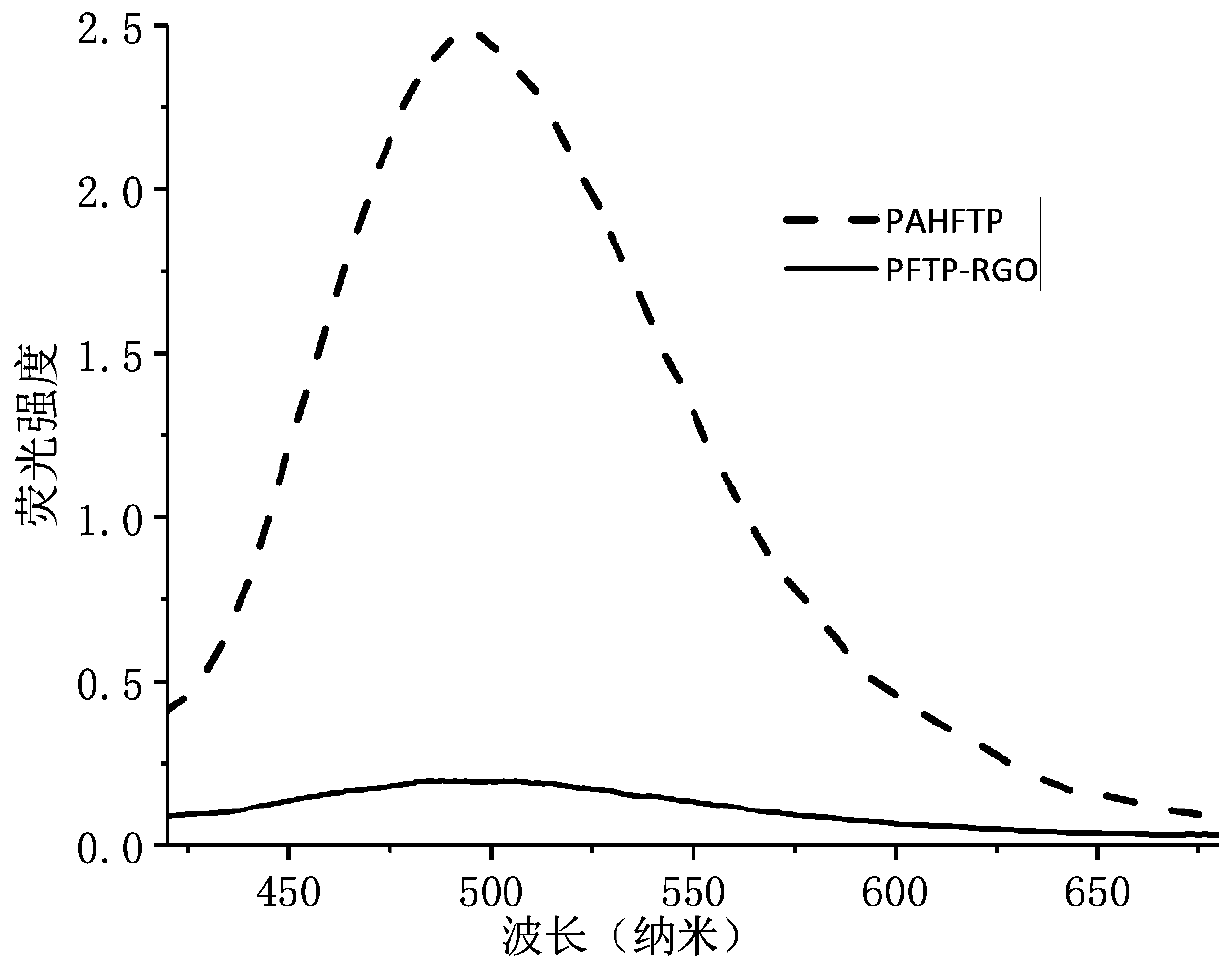Method of using graphene composite material covalently modified by polymer with aggregation-induced emission characteristic to prepare solid film optical limiter
A technology of aggregation-induced luminescence and covalent modification, which is applied in the direction of luminescent materials, chemical instruments and methods, instruments, etc., can solve the problems that limit the practical application of graphene materials, RGO sheets are prone to stacking clusters, poor solubility and Machinability and other issues
- Summary
- Abstract
- Description
- Claims
- Application Information
AI Technical Summary
Problems solved by technology
Method used
Image
Examples
Embodiment 1
[0061] Embodiment 1: A specific synthesis method of a polymer with aggregation-induced luminescence properties and a polymer covalently modified graphene material with aggregation-induced luminescence properties:
[0062] 1) Synthesis of compound 1: To a 500 mL round bottom flask were added tetrabutylammonium bromide (900 mg, 2.79 mmol) and aqueous sodium hydroxide solution (250 mL, 50% wt). After the mixture was heated to 75°C, 1,6-dibromohexane (67.8 g, 277.9 mmol) and 2,7-dibromofluorene (9.72 g, 30 mmol) were added to the mixture, respectively. After stirring at 75°C for 2 hours, the mixture was cooled to room temperature and extracted with dichloromethane, and the organic layers were combined. Wash three times with deionized water and hydrochloric acid solution (0.1M). It was then dried over anhydrous MgSO4. After filtration and solvent evaporation, excess 1,6-dibromohexane was distilled off under reduced pressure using a vacuum pump. The crude product was then filtere...
Embodiment 2
[0068] Embodiment 2: A specific synthesis method for preparing a solid-state thin-film optical limiter by using a polymer covalently modified graphene composite material with aggregation-induced luminescence properties:
[0069] Steps 1)-6) are the same as above;
[0070] 7) Take 10g of PMMA powder, add 100ml of NMP into a narrow-necked bottle, and make the PMMA powder completely dissolved by ultrasound. During the ultrasound process, use a glass rod to stir once every half an hour to prevent PMMA from settling and forming a jelly, until the PMMA solution is clear and transparent. Denote the PMMA solution as solution A. like Image 6 shown.
[0071] 8) Dissolve 10 mg of composite PFTPE-RGO into 10 ml of NMP, and the solution of the sample is recorded as solution B. Add 5ml of solution A to the vial below, and add 1ml of solution B to the vial. Sonicate the vial for about half an hour to mix the solution well and remove air bubbles from the solution. The sonicated homogene...
PUM
 Login to View More
Login to View More Abstract
Description
Claims
Application Information
 Login to View More
Login to View More - R&D
- Intellectual Property
- Life Sciences
- Materials
- Tech Scout
- Unparalleled Data Quality
- Higher Quality Content
- 60% Fewer Hallucinations
Browse by: Latest US Patents, China's latest patents, Technical Efficacy Thesaurus, Application Domain, Technology Topic, Popular Technical Reports.
© 2025 PatSnap. All rights reserved.Legal|Privacy policy|Modern Slavery Act Transparency Statement|Sitemap|About US| Contact US: help@patsnap.com



